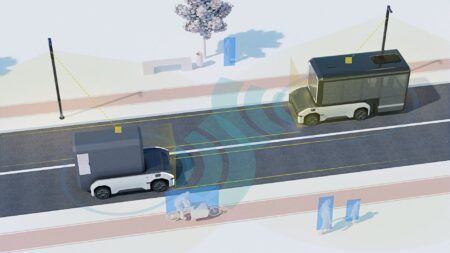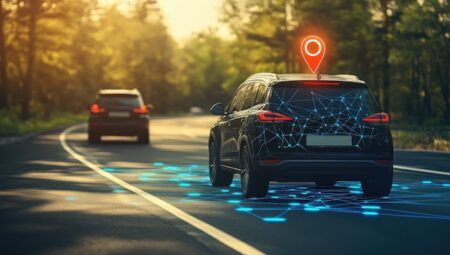At the International Conference on Robotics and Automation (ICRA) taking place in Brisbane, Australia, today (May 23), researchers from the Massachusetts Institute of Technology (MIT) will present a new system that enables driverless cars to change lanes more like human drivers.
Algorithms for controlling lane changes are an important topic of study in the field of self-driving cars. But most existing lane-change algorithms have one of two drawbacks: either they rely on detailed statistical models of the driving environment, which are difficult to assemble and too complex to analyze on the fly; or they are so simple that they can lead to impractically conservative decisions, such as never changing lanes at all.
The new lane-change algorithm developed at MIT’s Computer Science and Artificial Intelligence Laboratory (CSAIL) splits the difference between the two models and allows for more aggressive lane changes than the simple versions do, but relies only on immediate information about other vehicles’ directions and velocities to make decisions.
One standard way for autonomous vehicles to avoid collisions is to calculate buffer zones around the other vehicles in the environment, which not only describes their current positions, but their likely future positions within a specified time frame.
To compute buffer zones, algorithm designers must prove they guarantee collision avoidance, within the context of the mathematical model used to describe traffic patterns. That proof can be complex, so the optimal buffer zones are usually computed in advance, and the vehicle calls up the precomputed zones that correspond to its situation. However, in fast and dense traffic, precomputed buffer zones can be too restrictive.
The MIT researchers’ system uses a mathematically efficient method to compute new buffer zones on the fly, complete with proof of collision avoidance. Using only a few equation variables to define the vehicle’s new buffer zone, the system is so simple that it can be evaluated on the fly. The researchers tested their algorithm in a simulation including up to 16 autonomous cars driving in an environment with several hundred other vehicles.
“The autonomous vehicles were not in direct communication but ran the proposed algorithm in parallel without conflict or collisions,” explained Alyssa Pierson (above right), a CSAIL researcher and first author on the new paper.
“Each car used a different risk threshold that produced a different driving style, allowing us to create conservative and aggressive drivers. Using the static, precomputed buffer zones would only allow for conservative driving, whereas our dynamic algorithm allows for a broader range of driving styles.”
Professor of electrical engineering and computer science, and director of CSAIL, Daniela Rus (below), said, “The optimization solution will ensure navigation with lane changes that can model an entire range of driving styles, from conservative to aggressive, with safety guarantees.”




